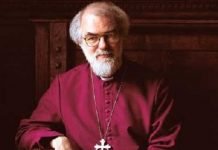The General Convention Office released The Episcopal Church’s annual batch of parochial report data this week, providing a snapshot of the church in 2022 as dioceses and congregations were beginning to rebound from COVID-19 disruptions. In addition to the numbers, these parochial reports also included responses to narrative questions aimed at deepening the church’s understanding of the changes, challenges and opportunities present in parish life.
The topline numbers continue to show a church experiencing gradual long-term membership decline, much like other mainline Protestant denominations. The Episcopal Church’s tally of baptized members dropped just below 1.6 million in 2022, down 21% from 2013.
The church recorded an even sharper drop in average Sunday attendance in the past decade, down 43% to 373,000 in 2022, though that one-year total was up by 19% from the pandemic-driven low of 313,000 in 2021. Despite the decline in membership and attendance, churchwide plate and pledge income was effectively unchanged from 2018 to 2022 at $1.3 billion and up 6% since 2013.
This was the third year that the parochial report included narrative questions, which asked congregations to elaborate on their experiences in 2022, and to identify points of hope for the future. The responses were summarized in an analysis prepared by Taylor Hartson, a sociologist at the University of Notre Dame.
Hartson identified four major themes in the responses: returning to in-person worship, supporting spiritual growth across generations, welcoming newcomers into the faith community and planning for long-term sustainability.
“Many parishes are experiencing increasing costs associated with older building maintenance and utility use while also experiencing a decrease in available finances from income and pledges,” Hartson wrote. “Some parishes have had to dip into endowment funds to keep up with building maintenance, some have been fortunate to secure grants, and others have had to face the difficult decision of closing the parish because they were no longer financially able to support a congregation. With inflation affecting costs and pledging, parishes are faced with difficult decisions about how to plan for their futures.”
At the same time, the responses suggested some Episcopalians are planning for the post-pandemic church with renewed hope and ingenuity.
“Our congregation mostly dealt with challenges associated with rapid growth,” one respondent said. “Managing spaces and human resources for an active engaged congregation proved to be a delightful challenge for our parish.”
The House of Bishops is discussing the numbers and long-term trends at its Sept. 19-22 meeting, which is being held online. On Sept. 19, the bishops heard a data-filled presentation by the Rev. Molly James, the deputy executive officer of General Convention, Matthew Price, Church Pension Group’s senior vice president for research and data, and the Rev. Meghan Froehlich, director of the church’s office for transition ministry.
“While there are indeed downward trends or challenges evident in our data, the data also shows much cause for hope,” James said Sept. 21 in a church news release on the latest parochial report data. “We still have tremendous human, material and financial resources. People are seeking what our congregations offer. We have communities whose primary characteristics are hospitality and love, who seek to offer a place that helps people make meaning in their lives. For all these reasons we can be hopeful about our future.”




